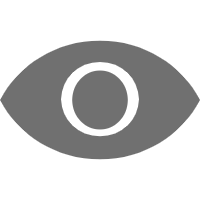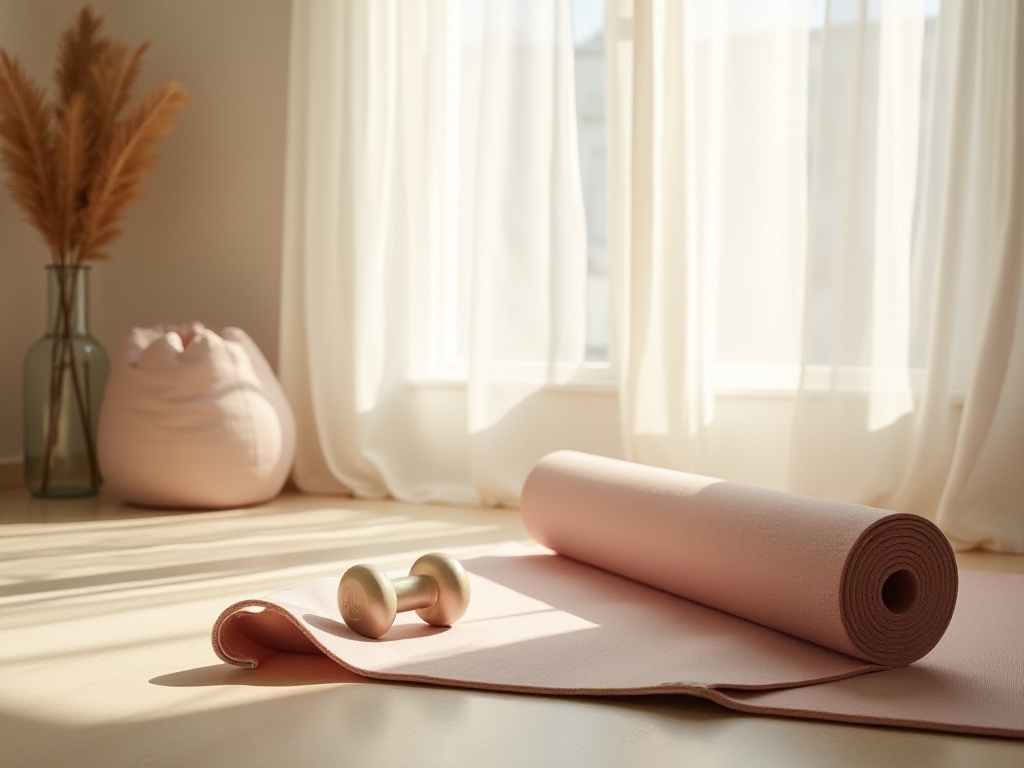Opening Thoughts
Brothers and sisters, are you like me, feeling envious when seeing friends posting their workout photos on social media, determined to start exercising yourself, only to give up after three days? As someone who went from being unable to run for five minutes to now easily completing 10-kilometer runs, I totally understand this feeling. Today, I'll share my journey and tell you how I transformed from a "couch potato" who spent all day scrolling on my phone to a fitness enthusiast who consistently works out 4-5 times a week.
I remember my first attempt at working out - I went jogging in the park for three consecutive mornings, but on the fourth day, I was so sore I couldn't even get out of bed, and I gave up completely. At that time, I wondered why some people could stick to exercising while I always quit halfway. After two years of exploration, I finally found an exercise routine that suits me, and now daily exercise has become an essential part of my life, as natural as brushing teeth and washing my face.
Starting from the Mind
To be honest, when I first started working out, my mindset was way too impatient. After seeing videos online about getting abs in 21 days, I jumped on the bandwagon and set a goal to "lose 10 pounds in a week." The result was predictable - not only did I not lose weight, but I gained several pounds from binge eating. That period really discouraged me, and I almost gave up.
Later, I came across a really reliable fitness blogger who said something that was an eye-opener: "Fitness isn't about looking good temporarily, it's about staying healthy for life." From that point on, I started adjusting my mindset, focusing less on the scale and measurements, and more on how my body feels.
I remember one time doing push-ups at home, collapsing after just five repetitions, my arms shaking like a sieve. I felt really discouraged then, thinking I was too weak. But instead of giving up, I set a very realistic small goal: just exercise for 15 minutes each day, doing as many as I could. After a month of persistence, I was amazed to find that I could not only do 15 standard push-ups in one go but could also climb several flights of stairs without getting winded.
My biggest realization during this process was: never compare yourself to others, compare yourself to who you were before. Doing one more rep than yesterday, exercising five minutes more than last week - these are all progress. Now I record my workout data in my phone's notes every day, and seeing those numbers gradually increase gives me a great sense of achievement.

Space Organization
Speaking of workout environment, this is really crucial. Previously, I didn't have a dedicated exercise space, so every time I wanted to work out, I had to spend ages tidying up. Just finding a place to lay out my yoga mat was a hassle, often killing my motivation before I even started.
Later, I had a bright idea and carved out a 2-square-meter dedicated workout area in the corner of my living room. Though the space is small, it has everything: my yoga mat is always laid out, dumbbells and resistance bands are neatly arranged on a small cart nearby, and I've put up posters of my favorite athletes on the wall. Every time I pass by this corner and see the equipment, I naturally feel like moving a bit.
My friend's setup is even more impressive - her balcony is just big enough for a yoga mat, but she's maintained her fitness routine in this tiny space for over two years. Her secret is: this space is exclusively for working out. No storage, no laundry, just a sacred space for exercise. Every morning when she opens the balcony door, with sunlight streaming in and the sounds of the morning market below, it's absolutely delightful.
This taught me an important lesson: the size of your workout space doesn't matter as much as giving it a dedicated purpose. Just like you'd make your bedroom a haven for rest, your workout area needs its own unique atmosphere. I now strongly recommend that everyone, even if you only have space for a yoga mat, plan it well and make it your daily energy station.

Equipment Selection
When it comes to workout equipment, I have plenty to say. I remember when I first started working out, seeing all these "must-have equipment lists" online almost made me spend my entire salary. Treadmill, spinning bike, multi-functional trainer - I added them all to my cart. Thankfully, I remained rational and decided to start with just the basics.
Looking back now, I'm so glad I didn't make those impulse purchases. My first piece of exercise equipment was a yoga mat, which I spent a long time choosing, mainly focusing on its non-slip properties. A good yoga mat can really improve your workout experience by several levels. I had bought cheap ones before, but they wore out quickly and were very slippery - I kept sliding forward during planks, which made me feel very insecure.
Next, I got workout clothes. Honestly, you don't need to buy expensive ones - comfort should be the priority. I bought two sets of basic moisture-wicking sportswear that were very comfortable and breathable. I remember once working out in a cotton T-shirt, and my entire back was soaked - it was really uncomfortable. Since then, I understood the importance of proper workout clothing.
Athletic shoes are also essential. I bought my first pair of running shoes during a mall sale. Though they weren't a famous brand, they fit perfectly and didn't cause any blisters while running. Later I learned that trying on shoes is the most important part of choosing athletic footwear - no matter how expensive the shoes are, they're useless if they don't fit well.
Only after I could consistently maintain my workout routine, about three months in, did I start considering other equipment. First, I bought a pair of light dumbbells, perfect for basic strength training. Then I gradually added resistance bands and foam rollers as auxiliary equipment. I only bought each item when I actually needed it, which prevented waste and ensured each piece of equipment was well-used.
Now my workout corner is filled with time-tested equipment, each piece having accompanied me through countless sweaty moments. I especially recommend that beginners don't invest too much at once - start with the basics and let your equipment grow along with your fitness level.
Time Management
When it comes to time management, this might be the most challenging issue for many people. When I first tried to develop an exercise habit, I always felt like I didn't have enough time. With work being so demanding, trying to squeeze in exercise felt like I was making things difficult for myself.
But later I realized that "not having time" really meant not making exercise a high enough priority. Take my current schedule for example: I wake up at 6:30 AM, and after washing up, I start exercising. 7:00-7:30 AM is my non-negotiable workout time. This half hour is like charging myself for the whole day - not only does it not affect my work, but it actually makes me more energetic throughout the day.
Of course, I've also gone through extremely busy periods. Sometimes after working late, I really couldn't get up early the next day. During these times, I would use a "divide and conquer" strategy: breaking the 30-minute workout into three 10-minute segments. For instance, doing 10 minutes of core exercises during a work break, 10 minutes of stretching during lunch break, and 10 minutes of strength training after getting home.
While this approach might seem fragmented, the results aren't compromised at all. In fact, I found that these short breaks help me maintain better focus at work. Especially that 10-minute stretch during lunch break - it's better than coffee for staying alert.
I have another small trick: writing workout time into my daily schedule. Just like appointments, this time slot is specifically reserved for exercise and won't be easily given up for other things. Over time, this becomes a habit, as natural as brushing teeth and washing face.

Specific Exercises
When it comes to exercise moves, I really want to share my insights with everyone. Actually, the most effective exercises are often the most basic ones - those flashy moves might not be as effective as a proper squat.
These are the exercises I do most often: First is squats. When I started, I would shake after doing 15 consecutive squats, but now I can easily complete 3 sets of 15 reps. Squats are truly the king of full-body exercises, working not just the thighs and glutes, but also improving core strength.
Then there's the plank, which looks simple but is really challenging. I can now hold it for 45 seconds, doing 3 sets. I remember when I first started, my whole body would shake after 20 seconds, but now I can hold it steady. The biggest benefit of planks is that they comprehensively train your core muscles and help improve posture.
Finally, there are push-ups. Honestly, this exercise was my nightmare. At first, I couldn't even do one standard push-up and had to do wall push-ups instead. Later, I set myself a goal: hold on one second longer each day, try one more time. This way, I can now do standard push-ups - though not many, each one is done with proper form.
Besides these basic moves, I also add variations based on my condition. On nice days, I'll go running in the park near my home; when I'm feeling down, I'll do some dance moves to music. What matters isn't what you do, but that you keep doing it.

Maintaining Motivation
Ultimately, the hardest part of exercise isn't starting, but persisting. I can honestly tell everyone that even now, there are times when I really don't want to exercise. But I've found a really effective method: setting staged rewards for myself.
For example, if I can exercise continuously for a week without breaks, I allow myself to buy a new piece of workout gear; if I can persist for a month, I'll book a professional massage. This kind of positive reinforcement is particularly effective because it turns exercise into a means of earning rewards rather than a burden.
Now I have a dedicated drawer in my closet filled with workout clothes I've collected over the past year. Each piece represents achieving a small goal, and looking at them reminds me of the effort I've put in. This sense of achievement is irreplaceable.
I've also developed a habit of posting a photo or writing a message on social media after each workout. This isn't about showing off, but about holding myself accountable. Through this, I've met many like-minded friends, and we often encourage each other and share workout tips.
Sometimes when I'm particularly tired from work or feeling down, I'll look back at my previous workout records. Seeing how I've progressed from barely being able to exercise for 5 minutes to now easily working out for half an hour - this kind of improvement brings an amazing sense of achievement.

Closing Reminders
Looking back on this year-plus fitness journey, my biggest realization is: change never happens overnight, but just by starting, you're already ahead of 90% of people.
Exercise has brought me more than just physical changes - more importantly, my overall state has become different. Work efficiency has improved, sleep quality is better, and even my mood has become more positive and bright. These changes were completely unexpected when I first started.
Exercise is like investing in yourself - every drop of sweat you put in will bring you surprising returns at some point in the future. Don't put too much pressure on yourself, don't compare yourself with others, find your own pace and stick to it - that's what's most important.
Finally, I want to say that everyone can become a better version of themselves. If you're hesitating about whether to start exercising now, just start today, even if it's just for ten minutes - it's better than doing nothing. Looking forward to meeting a better you on this fitness journey!
Oh wait, I almost forgot to mention, next week I'm planning to share some insights about scientific nutrition to take our workout results to the next level. Remember to follow me, and I'll see you in the next post!




